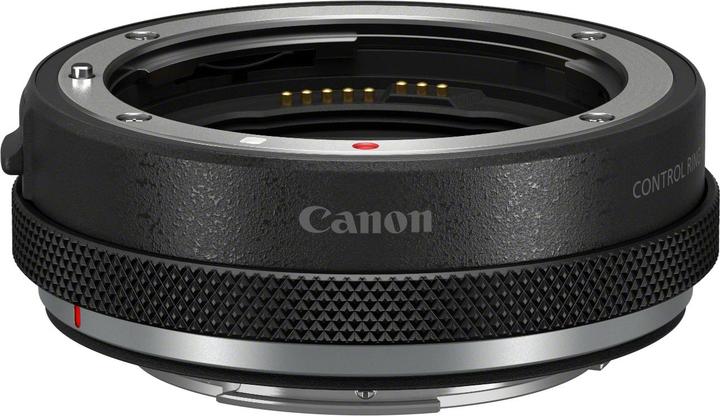
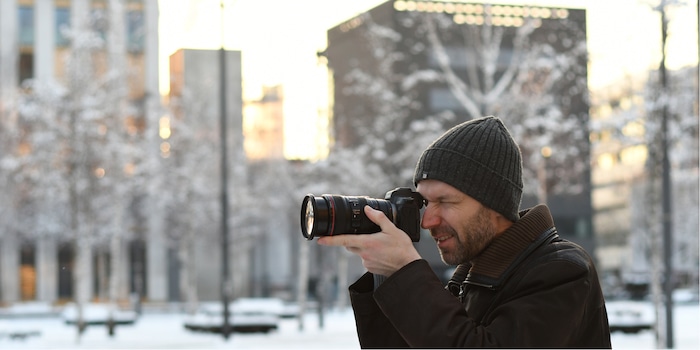
Canon EOS R: Easy to criticise, difficult to understand
My opinion of Canon's first mirrorless full-frame camera changed several times during the test. It does have some shortcomings, but the handling in particular is much more sophisticated than I first thought.
This test is quite long because we are dealing with a device that is new in many respects and is also very complex. The German-language user manual is 644 pages long, and I wouldn't have got very far without its help.


Canon RF 24-105mm f/4 L IS USM
Canon RF, full size

On first inspection, the body makes a robust impression and sits comfortably in the hand. The grip is also practical for larger hands. The LCD can be folded out 180 degrees and rotated. This makes it much easier to take selfies in video mode and the rotating mechanism also offers protection when not in use, as the sensitive side can be folded inwards.
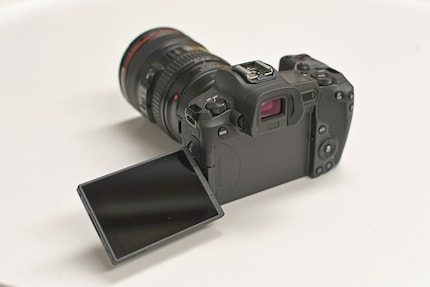
The camera can be charged via USB-C using a computer, for example. However, it cannot be used while charging. A classic charger is also included in the scope of delivery.
The new operating concept
The disadvantage of the rotatable LCD (pictured left): Compared to the Canon EOS 5D IV - or the 5D III as shown in the picture - there is no more space for the five buttons to the left of the screen.
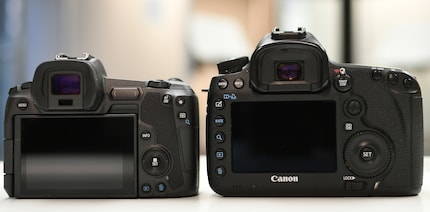
Some other controls are also missing compared to the full-frame SLR camera. The body is smaller and therefore offers less space. Canon has therefore fundamentally revised the operating concept.
- Instead of the familiar rotary dial, you have a ring with four direction buttons. The joystick of the 5D IV is missing. It has eight directions, so you can also move the focus point diagonally.
- The Q and Set buttons have been combined into one button.
- The lock slider is missing, instead there is a small lock button at the top.
- The start-stop button is also missing, but it's not needed on a mirrorless camera.
- Three of the four mini buttons above the small screen of the EOS 5D are missing. Only the backlight button is still there.
- New is a freely assignable rotating ring on the lens (only with the new R lenses, of course).
- Also new: the multifunction bar. This is the touch bar with the two arrows to the right of the viewfinder.
- The mode dial is now a button. There is a second dial around this button. Its function can be customised in the menu.
The operating concept is therefore very much based on freely configurable elements. That actually sounds good, but it is an ambivalent thing.
The advantage: If Canon were to simply omit certain buttons, these might be the ones you need most. This problem does not exist with the freely assignable elements. Even with fewer elements, you can define an operation that offers all the accesses that are important to you.
The disadvantage: You first have to find out what works for you. You will change the assignment several times. And as long as you keep switching, you'll confuse yourself. To make matters worse, the buttons have different functions depending on the mode. There is therefore a risk that you won't be able to find your way around your own camera for quite a long time.
By the way, Canon takes the game so far that you can even assign a completely different function to the labelled buttons. Again, I'm not sure whether this is a good thing. On the one hand, I think it would be great to use the button with the star (AE Lock) for something else, as I rarely need this function. On the other hand, the buttons are then incorrectly labelled. If you ever lend the camera to someone, the confusion is perfect.
The touch bar is a completely new element - and it takes a lot of getting used to. Firstly, I have to assign a function manually. I select the white balance here, for example. In the menu, I also decide whether I want the bar to be locked or not. If it is not locked, I run the risk of changing something at the slightest touch. If it is locked, however, I always have to touch the right arrow for a long time first. Now it can happen that I want to unlock the bar even though it is not locked. Then I adjust the white balance again. The bottom line is that it's quite a fiddle.
The solution to this problem is the lock button. You can also select it freely. But you have to understand this first. By default, the lock button only locks the lens ring and one of the two dials, which confused me. I then configured the camera so that everything is locked, including the touchscreen, touch bar and second dial. This way, I always know whether the touch bar is locked or not.
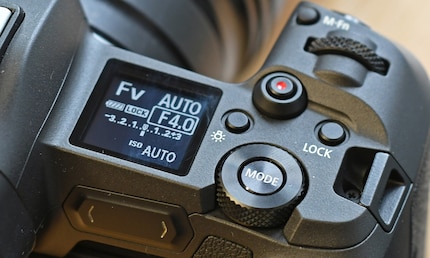
The freely configurable lens ring is great. But only the new lenses have it. If I put the exposure compensation on it, for example, then I don't have this setting as soon as I use an older lens. As the lens selection for the R system is still very small, you will certainly be shooting with an EF lens from time to time. Canon offers an adapter that has the ring integrated. I would definitely recommend this instead of the cheaper adapter without the ring. Even if Canon gives you the cheap adapter as a gift and you can't get a camera without it at the moment.
The new camera mode called Flexible Mode (Fv) is practical. Use the quick dial to select whether you want to adjust the exposure, aperture or ISO. You then use the main dial to adjust the value. The funny thing is that you can also set each of these factors to "Auto". This means you have all four camera modes in one and also always have the ISO under control.
However, it also took me a moment to really understand the operation. For example, if I set the ISO to "Auto", it still shows me an ISO value afterwards. But this is an automatically calculated value. I can recognise this by the vertical bar under the value. Very well thought out - but you have to know that first.
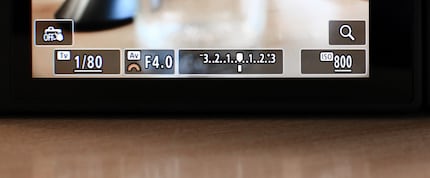
In short: The operation is much better than it seems at first glance. Canon has invested a lot of brainpower and I have never seen a camera that can be adjusted so flexibly. However, you really have to get to grips with the device, read the manual and even then it can take a long time to find the best setting for you.
The sensor and the image quality
In order to judge the image quality not just by gut feeling, but objectively comparable, I would always have to take the same picture with the same lighting conditions and camera settings. This would require a special test lab. Since we don't have that, I'll comment on the material from the test from dpreview.com.
The screenshot below compares the EOS R with the Sony A7 III at 25,600 ISO, i.e. in an area where even good sensors are noisy. As you can see, the Sony camera's sensor is clearly less noisy here. The section is slightly smaller on the Sony because the resolution is lower (24 compared to 30 megapixels).
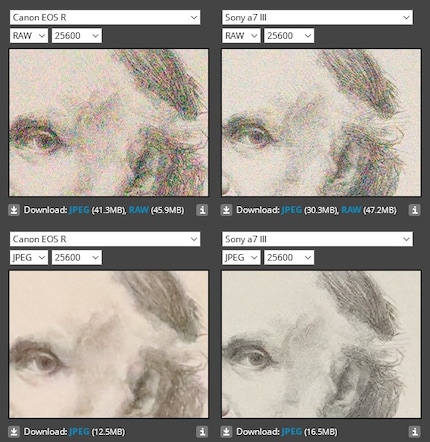
In JPEG format (bottom two images), the differences seem even greater to me. Sony's JPEG engine is probably better at bringing out details. But I'm not entirely sure, because different settings are possible in the camera with JPEG. Here, for example, is the same image twice, once with the standard settings and once with the sharpness turned up.

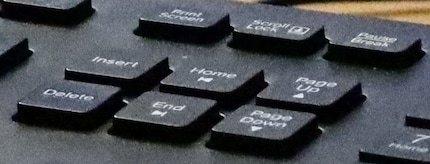
According to dpreview.com, the Canon EOS R also lags behind the Sony A7 III in terms of dynamic range. And also in comparison to the Nikon Z6.
However, the sensor has one advantage over the Sony: the shutter is closed when changing lenses and protects the sensor from dust. With Sony, the sensor is exposed and is very susceptible to contamination.
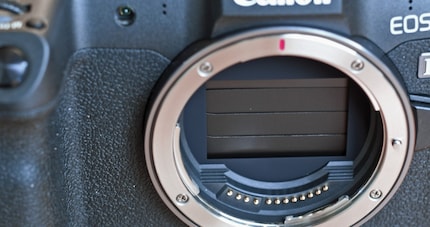
Of course, the image quality depends not only on the sensor, but also on the lens. The RF 50mm F1.2 is sharper in the comparison by dpreview.com, but has slightly more chromatic aberration than the reference lens EF 85mm. I tried out the 24-105mm. This made a very good impression on me. Although the corners are visibly darker in the wide angle, this vignetting is at least as strong with the corresponding lens for the SLR system (EF 24-105mm F/4L).


Autofocus and speed
The autofocus works quickly and reliably, even in the dark. I really enjoyed taking photos in the winter dusk.
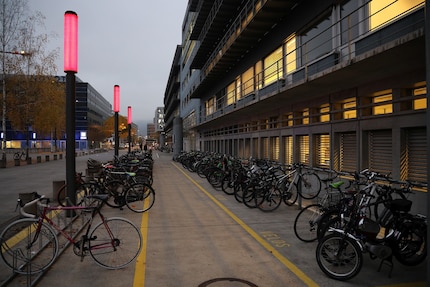
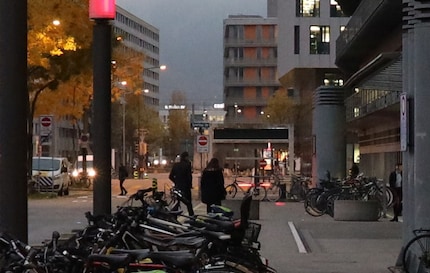
The adapter does not seem to affect the autofocus in any way. You can shoot with a telephoto lens for Canon SLR cameras without any problems.
So does the Canon EOS R also have what it takes for sports and action? Only to a limited extent. The continuous shooting speed drops from 8 to 5 frames per second when it's tracking, and normally you want it to track. That's quite slow. In silent mode, continuous firing is not possible at all. The AF field can be moved horizontally and vertically quite quickly using the two dials. The direction buttons are only used for fine adjustment and are very slow.
Video function
Mirrorless cameras have a fundamental advantage over SLRs when it comes to video function. With an SLR, the mirror has to be flipped up for filming, which means that the viewfinder remains black and the normal, fast autofocus no longer works. With the launch of a professional mirrorless system, Canon could make up ground in the video sector.
The 180-degree rotatable touch screen is useful for videos, as self-shooting is much more convenient. Headphone and microphone connections are of course also available.
As expected, the autofocus works smoothly in video mode. The focussing is intentionally a little slower than in photo mode, as the recording would otherwise quickly appear nervous. You can adjust this in the settings. Different speeds are even possible before and during video recording.
With the dual pixel autofocus, Canon has also introduced a technology that is very useful for videographers. The focus motor does not constantly move back and forth until it has focused correctly, but instead moves purposefully towards the correct focus point. Here is a comparison between dual-pixel focussing and a conventional focussing system.
Now the video function also has a clear weakness. If you want to record videos in 4K, the camera drastically limits the image section. The crop factor is around 1.8. You can see what this means in the test video below. I shot both clips at 50 mm from a distance of around two metres, the first in Full HD and the second in 4K.
Numerous YouTube vloggers are completely ticked off about the 4K crop. In my opinion, this is an overreaction. Sure, a crop is impractical, especially for vlogging selfies, but you don't actually need native 4K. I don't need to be able to study my favourite Youtuber's facial pimples in microscopic resolution. I see a disadvantage especially for cinematographic landscape shots, where the highest image quality is just as important as a large image section.
Here is a video where you can test whether you can see a difference between Full HD (with appropriate image cropping) and 4K.
I don't see any difference because my screen can't display 4K at all. And that doesn't make me an exotic. Even on the ultra-large screen that my editorial colleague Kevin Hofer is currently testing, we can't see 4K.
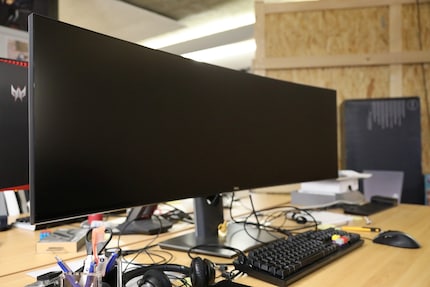
And another disadvantage: The Canon EOS R has no image stabilisation in the body itself. This technology is known under the abbreviation IBIS for In-Body Image Stabilisation. However, the image stabilisation of the lenses also works with EF lenses for SLR cameras.
This minus point may not be so bad either. The Panasonic GH5s, for example, does not have IBIS either, and a device cannot be more of a video camera. The reason given is that the stabiliser only gets in the way when filming with a tripod or gimbal. This is true, but firstly, you might also be filming hand-held and a stabiliser can also be deactivated.
Conclusion: A solid all-rounder that can't do anything perfectly
The Canon EOS R could have been the perfect camera for video producers: Mirrorless, armed with video-ready autofocus, fully rotatable screen and 10-bit C-Log. But it's not, because it can only display 4K in crop mode.
The Canon EOS R could have been the perfect camera for sports, action and wildlife, with its silent shooting and full frame autofocus. But it's not, because it only shoots single frames silently and only 5 frames per second with tracking autofocus.
The Canon EOS R could have been the perfect camera for landscape and architecture, because the lenses fulfil the highest demands. But it is not, because it is not a pixel monster. With 30 megapixels, the sensor barely utilises the potential of the high-end lenses.
My interest in IT and writing landed me in tech journalism early on (2000). I want to know how we can use technology without being used. Outside of the office, I’m a keen musician who makes up for lacking talent with excessive enthusiasm.
